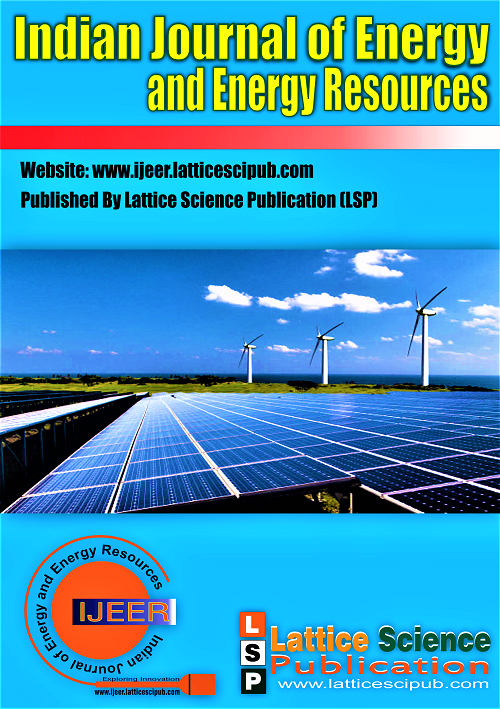Driver’s Activity Detection System using Humanantenna
Main Article Content
Abstract
Now a days we can see that there are many cases which are occurring due to the drowsiness of drivers and that has become a main problem of the automotive industry. To overcome this in automotive industry the introduction of new technologies that is by introducing of new sensor which can detect the different activities. Detection of activities by sensors is for biological measuring such as heartbeat, oxygen level, respiration activity, etc. By applying such widespread variety of sensor usage in the system has a very high implementation cost and also very complexity which is a bit challenging design. In this paper, we are going study that how humantenna effect is used to detect and test the drive drowsiness by using simple and budget sensors in automotive industry.
Downloads
Article Details

This work is licensed under a Creative Commons Attribution-NonCommercial-NoDerivatives 4.0 International License.
How to Cite
References
A M. Foreman, Y. Hayashi, J.E. Friedel, and O. Wirth, “Social distance
and texting while driving: A behavioral economic analysis of
social-707, Oct 2019. [CrossRef]
Goldenb Driver fatigue. ESRA2 Thematic report Nr. 4. ESRA project
(E- The Hague, Netherlands Institute for Road safety Research SWOV,
Celaya-Padilla, et. al., "“Tetfmg & Driving” Detection Using Deep
Convolutional Neural Networks." Applied Sciences, vol. 9, no. 15, p.
, Jan. 2019. [CrossRef]
Smith, Karly A., et. al., "Gesture recognition using mm-wave sensor for
human-car interface." IEEE sensors letters, vol. 2, no. 2, pp. 1-4, Feb.
[CrossRef]
Martinez, H., Sanabhuja, J., and Gameiro, P., “Heart and respiration
unobtrusive sensors integrated in the vehicle,” HARKEN project, 2013.
Fleming, Bill. "Advances in automotive electronics [automotive
electronics].” IEEE vehicular technology magazine, vol. 10, no. 4, Dec.
[CrossRef]
Zaouk, Abdullatif K., et. al., "Driver Alcohol Detection System for
Safety (DADSS^A Status Update" Proceedings of the 25th International
Technical Conference on the Enhance Safety of Vehicles, Paper
Number 17-0271, 2017.
Cohn, G.; Morris, D.; Patel, M.; Tan, D. Humantenna: using the body
as an antenna for real-time whole-body interaction. In Proceedings of
the SIGCHI Conference on Human Factors in Computing Systems (CHI
'12). ACM, New York, USA, 2012, pp. 1901-1910. [CrossRef]
B. C. Towe, “Bioelectricity and its measurement,” in Standard
handbook of biomedical engineering and design, McGraw-Hill, 2004.
Tawseef Ahmad Wani, Birinderjit Singh Kalyan. (2020).
Characterization of Junction and Junction-Less NMOS at Various
Parametric Changes. International Journal of Advanced Science and
Technology, 29(06), 8141-8151.
Kalyan, Birinderjit Singh, and Singh Balwinder. "Quantum dot cellular
automata (QCA) based 4-bit shift register using efficient JK flip flop."
International Journal of Pure and Applied Mathematics 118, no. 19
(2018): 143-157.
Becker, Jan C., and Andreas Simon. "Sensor and navigation data fusion
for an autonomous vehicle." In Proceedings of the IEEE Intelligent
Vehicles Symposium 2000 (Cat. No. 00TH8511), pp. 156-161. IEEE,
Fayyad, Jamil, Mohammad A. Jaradat, Dominique Gruyer, and
Homayoun Najjaran. "Deep learning sensor fusion for autonomous
vehicle perception and localization: A review." Sensors 20, no. 15
(2020): 4220. [CrossRef]
G. S. Maximous and H. A. Bastawrous, "Driver Drowsiness Detection
Based on Humantenna Effect for Automotive Safety Systems," 2020
IEEE 9th Global Conference on Consumer Electronics (GCCE), 2020,
pp. 391-392, doi: 10.1109/GCCE50665.2020.9291815. [CrossRef]
M. M. El-Barbary, G. S. Maximous, S. Tarek and H. A. Bastawrous,
"Validation of Driver Drowsiness Detection Based on Humantenna
Effect Using Facial Features," 2021 International Conference on
Microelectronics (ICM), 2021, pp. 216-219, doi:
1109/ICM52667.2021.9664899. [CrossRef]





